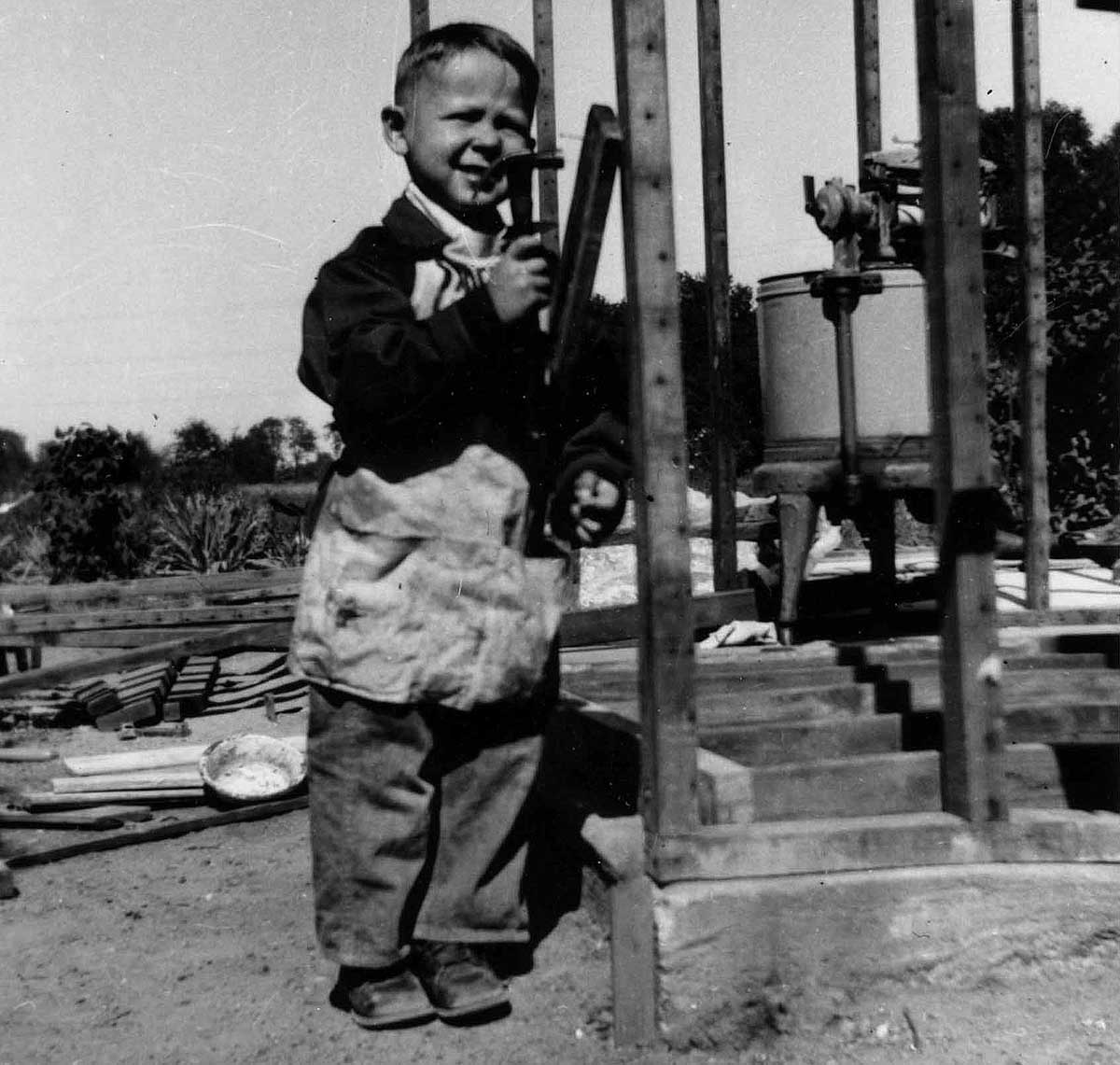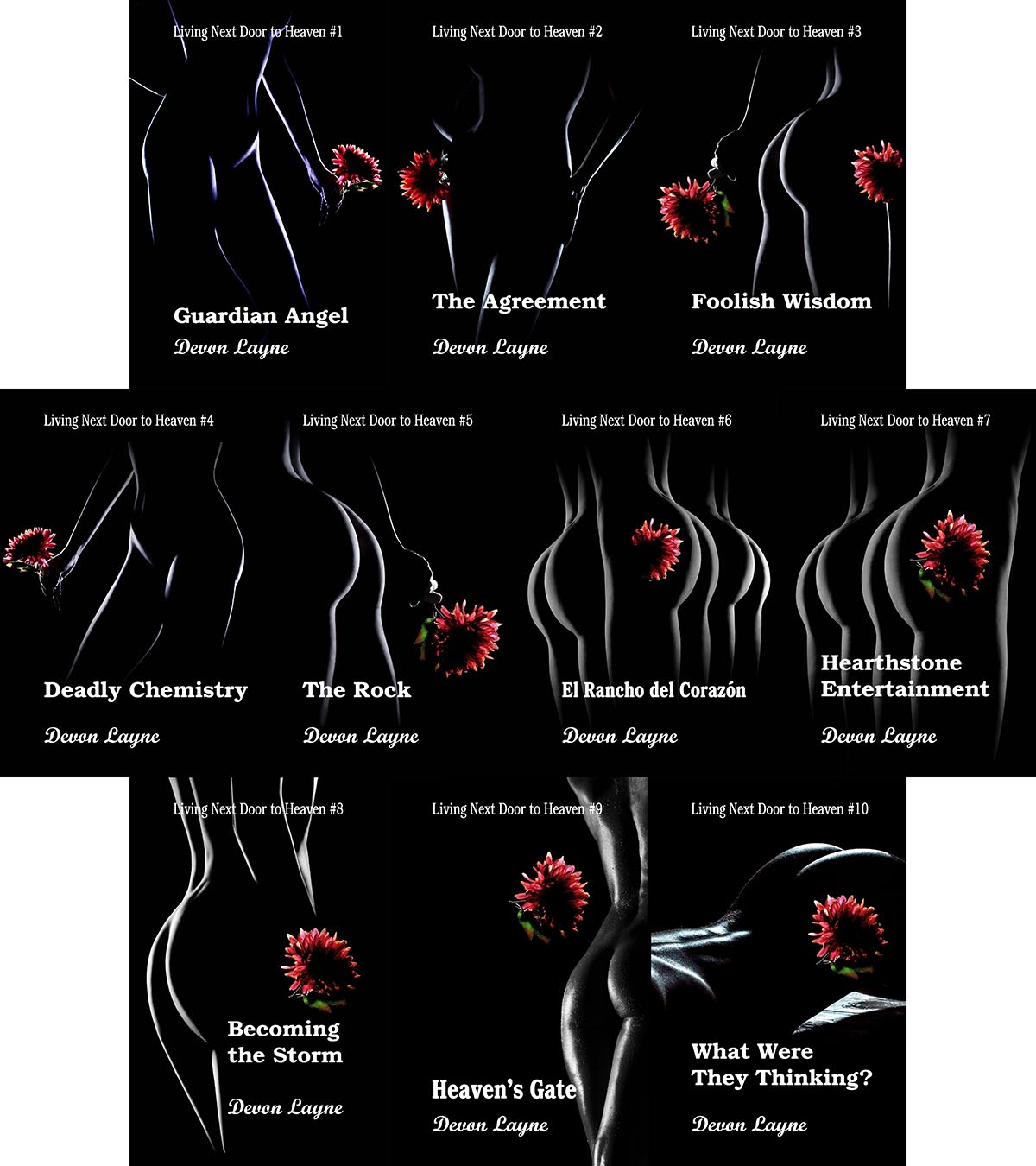9/15/2024
Put Your Butt Behind You
This is number seventy-nine in the blog series, “My Life in Erotica.” I encourage you to join my Patreon community to support my writing.

IN KEEPING WITH last week’s theme of expanding your tool chest, I came across a concept that was pounded into me as a child.

Remember I quoted Abraham Kaplan as saying, “Give a small boy a hammer, and he will find everything he encounters needs pounding.” I received my first literal toolbox for Christmas when I was five years old, and set about ‘helping’ my father put an addition on the house. My first and favorite tool? My hammer, of course. (That photo was in 1954. I love the wringer washing machine in the background.)
Now imagine, if you will, that small boy on his hands and knees with a block of wood and a nail in front of him, tapping tapping tapping on the nail and making little progress. You see, at that time I was still putting the wood and nail between me and the hammer. So, my hammer was facing my body as I tapped.
My father, in all his wisdom and love, said, “Boy! Put your butt behind you!”
I don’t know if was blind luck or instinct that led me to figuring out he meant to swing the hammer away from me instead of toward me. I did figure it out, eventually.
So, it strikes me that we often have writing tools at our disposal, but haven’t actually learned how to use them properly.

My most popular series is Living Next Door to Heaven. Its chapters have been downloaded over two million times. It was published in three parts on SOL and ten parts in eBooks. (Bonus question: Which of the ten did Amazon declare didn’t meet their community standards because of the cover?)
Much of this series is based on my memories and fantasies of life in Mishawaka, Indiana (where the first photo above was taken). And it was narrated from a first person point of view (POV) by Brian Frost. Many of the background experiences were from my life, the way I remembered it (or wanted to remember it). Delivering newspapers, going to a dude ranch, demonstrating on a televised cooking show, and many other background events could be illustrated from my photo albums.
On the other hand, it is fiction! It isn’t my autobiography. And I had to learn the difference in order to use that as a tool in telling the story. As the narrator, I started out using the names of people I knew in my neighborhood while growing up, and people I went to school with when I was very young. Oh no! Not if I was going to publish it to a broader audience than those who subscribed to SOL. Someone might recognize themselves!
In fact, one of the people from our old neighborhood did read the series, after I’d edited it and changed the names. We talked about it and with the simple name changes I made before publishing it in eBook, he didn’t recognize anyone.
“You mean Jessica is our Jessica next door? Oh! You know when she went to Purdue where I was, we finally managed to hook up. It was unbelievable!”
But that was one of the things I had to learn in using the first person POV and dragging my own experiences into it. Don’t follow history too closely! Let the characters you create tell their story, not the characters you knew in real life. I did much better with two other series loosely based on my life: Wonders of My World and Photo Finish.
The individual eBooks and entire Living Next Door to Heaven collection are available at Bookapy. And book seven, Hearthstone Entertainment, is free! So take that, Amazon!

I believe it is more likely for an author to fall into the trap of conforming to real life experience when they are writing from a first person POV. It’s very hard for an author to use the word “I” without actually seeing himself in the picture.
However, there are also pitfalls in using a third person POV that might need to be overcome when using that tool.
The first big problem is in head-hopping. For me, that is the trigger for saying “Put your butt behind you!” Head hopping is commonly a feature of the third person omniscient POV. From this viewpoint, the author can record what a character was thinking when he said something and in the next line record what the listener was thinking about the speaker. In one line you are in the head of the speaker and in the next line you are in the head of the listener.
When I read something that does this, I’m instantly confused as to who is thinking what and who knows what’s being thought. Here’s a quick sample.
“I think I know better how to do this than you do,” Brad said, smugly denigrating Lisa’s abilities.
“What an asshole,” Lisa thought.
Brad was offended.
Wait! What was Brad offended by? He couldn’t know what Lisa thought, could he? Who knows what? Whose head am I supposed to be in? Now try extending that to a group scene:
Tom secretly agreed with Lisa’s opinion.
Everyone knew that Alice thought all men were assholes.
“I’d like to show her what a nice guy is really like,” Bill thought.
I don’t even know what the subject is any longer, let alone whose head I’m in!
Even in a story in which the narrator knows everything, it is more effective to limit what the narrator tells the reader to the perspective of one or another character. In the next scene, go ahead and switch perspectives to a different character, but try to maintain a single character focus in each scene. This is sometimes referred to as third person limited rather than omniscient.
A small deviation from this rule is found in most contemporary romance. In the typical boy meets girl romance we know there will be an attraction, it will be fought against by at least one of the characters, they will part in a seemingly irreconcilable way, and eventually they will get back together. The reader expects to get a glimpse inside each character’s head, often seeing how they respond differently to a situation and to each other. But to use this tool effectively, the author needs to show clearly which character is the focus and how the emphasis has shifted from one to the other. Otherwise, the reader will be confused and in doubt.
So, even with POV in my tool chest, I need to learn to put my butt behind me in order to apply it correctly. Then I can really swing that hammer!

I’ve an idea for next week’s post regarding tenses and the third wall. No, they don’t have anything to do with each other, except that I’ve had to deal with both in one book. Let’s call it “Theatrical Design in the Novel.”
Please feel free to send comments to the author at devon@devonlayne.com.
